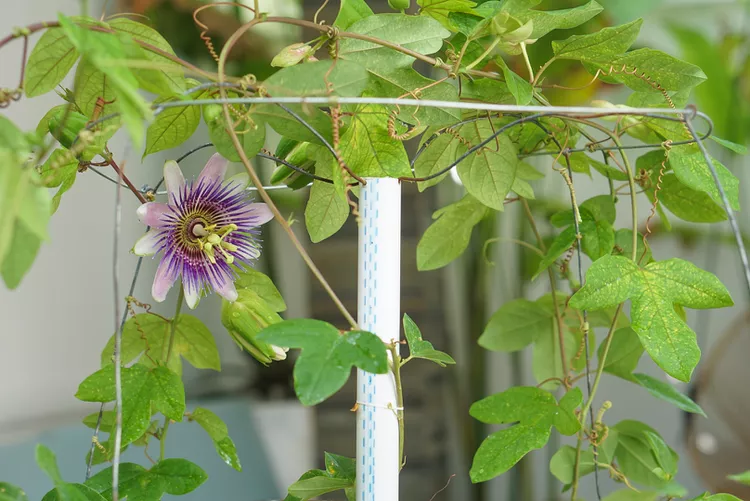
While some of them are either shrubs or trees, the majority of them are tendril-bearing vines. They can be either woody or herbaceous. Passion flowers produce stunning blossoms with a distinctive corona on a regular basis. It is possible to have eight coronal series, as with P. xiikzodz. When it ripens, the pentamerous blossom turns into an indehiscent fruit with many seeds.
Care
Despite having a tropical appearance, passionflowers may actually be produced practically anywhere, even in far colder climates. In reality, some kinds of passionflower can spread quickly in warmer climes, so you may even discover these seemingly delicate vines blooming by the side of the road. Since there are more than 500 species in the genus Passiflora, which is native to North and South America, the term “passionflower” can actually refer to a wide variety of plants.
Passionflowers are typically trained on a trellis, fence, or other vertical structures where they are hardy. Passionflower plants are frequently planted in pots and brought indoors for the winter in climates where they are not hardy. They should typically be planted on average, but well-drained soil, in full sun to light shade. For many species, which can be harmed by strong winds or bad weather, a protected area is advised, such as against a garden wall.

Light
Plant your passionflower vines in full sun to partial shade to keep them flourishing and healthy. In severely hot areas, plants benefit from some afternoon shade. Typically, passionflowers require four to six full hours of sunlight per day (or more in cooler climates). Give potted plants bright, indirect light and keep them away from draughts if you move them indoors for the winter.
Planting and Soil
Your vines should be planted in fertile, moist soil that drains properly. The pH of the soil is unimportant and can range from 6.1 to 7.5, which is in the neutral to acidic range. Mulching around the base of the plant will help it retain moisture without becoming waterlogged and adding compost to the planting hole will help supply nutrients.
It’s ideal to sow passionflower in the spring or fall. It favours a protected area, such as a wall. Passionflower vines typically require some sort of support to grow, such as a trellis, a building, or another plant. It can be trained to climb a pergola or other structure, but it only needs a little help and doesn’t need to be tied because it has tendrils that cling to themselves.
Water
After planting, passionflowers need to be given a thorough watering. Beyond that, during their growing season, they normally flourish on one or two weekly watering. A weekly supply of 1 to 1.5 inches of water should be provided.
Temperature and Humidity
In colder climates, passionflower plants may require winter protection because they like warm weather. Bring your plant inside as the temperature drops to avoid dieback. While a strong wind can harm stems and scorch leaves, plant them in a wind-sheltered region. Moreover, they thrive in environments with high to moderate humidity.
Fertilizer
Because they consume a lot of food, passionflower vines will benefit from regular, light applications of balanced, all-purpose fertilizer with equal parts nitrogen, phosphorus, and potassium. Before early spring new growth appears, fertilize the plant. Afterwards, repeat every four to six weeks until early autumn. Follow the directions on the product packaging for how much to use.
Table





